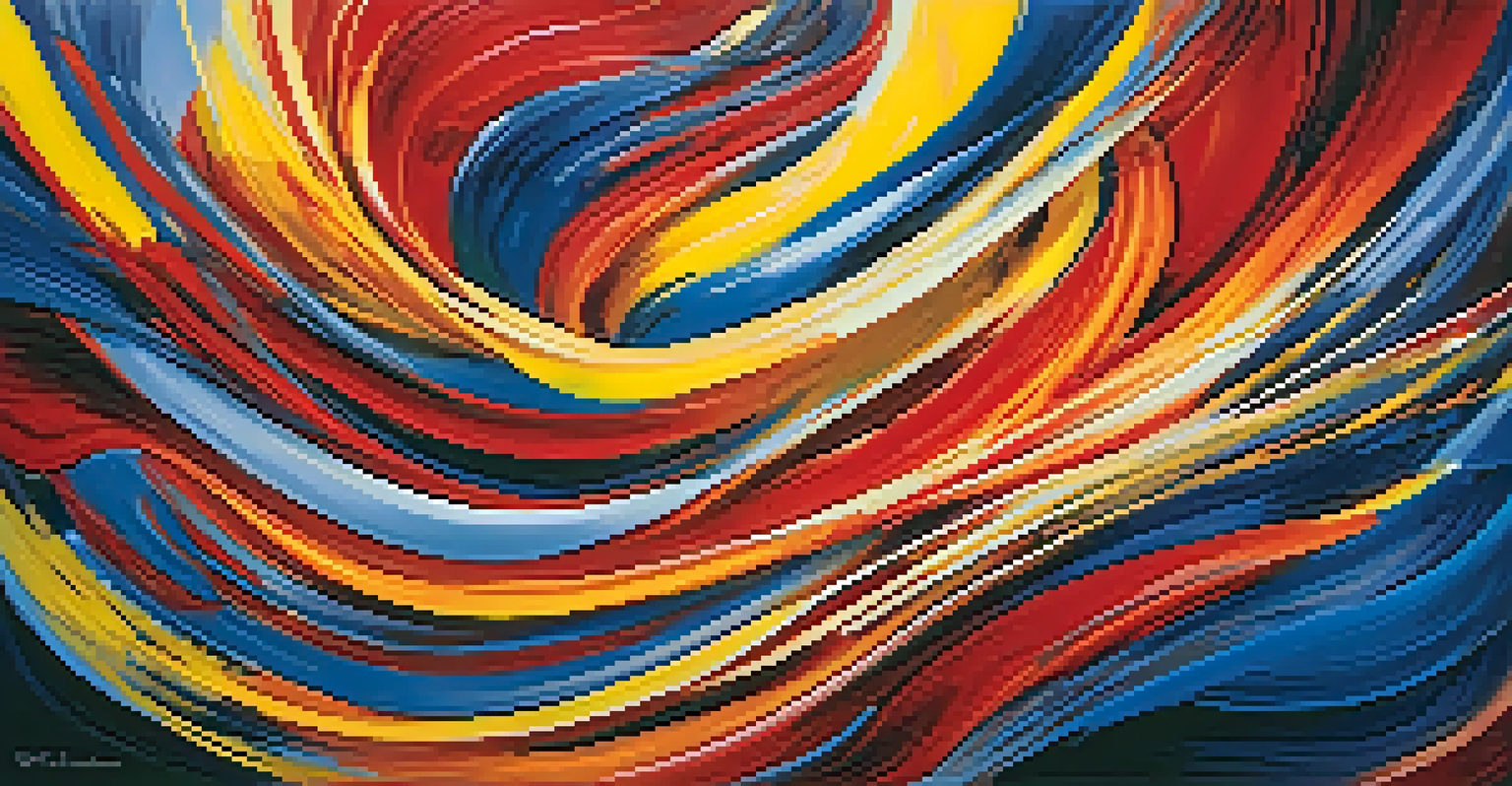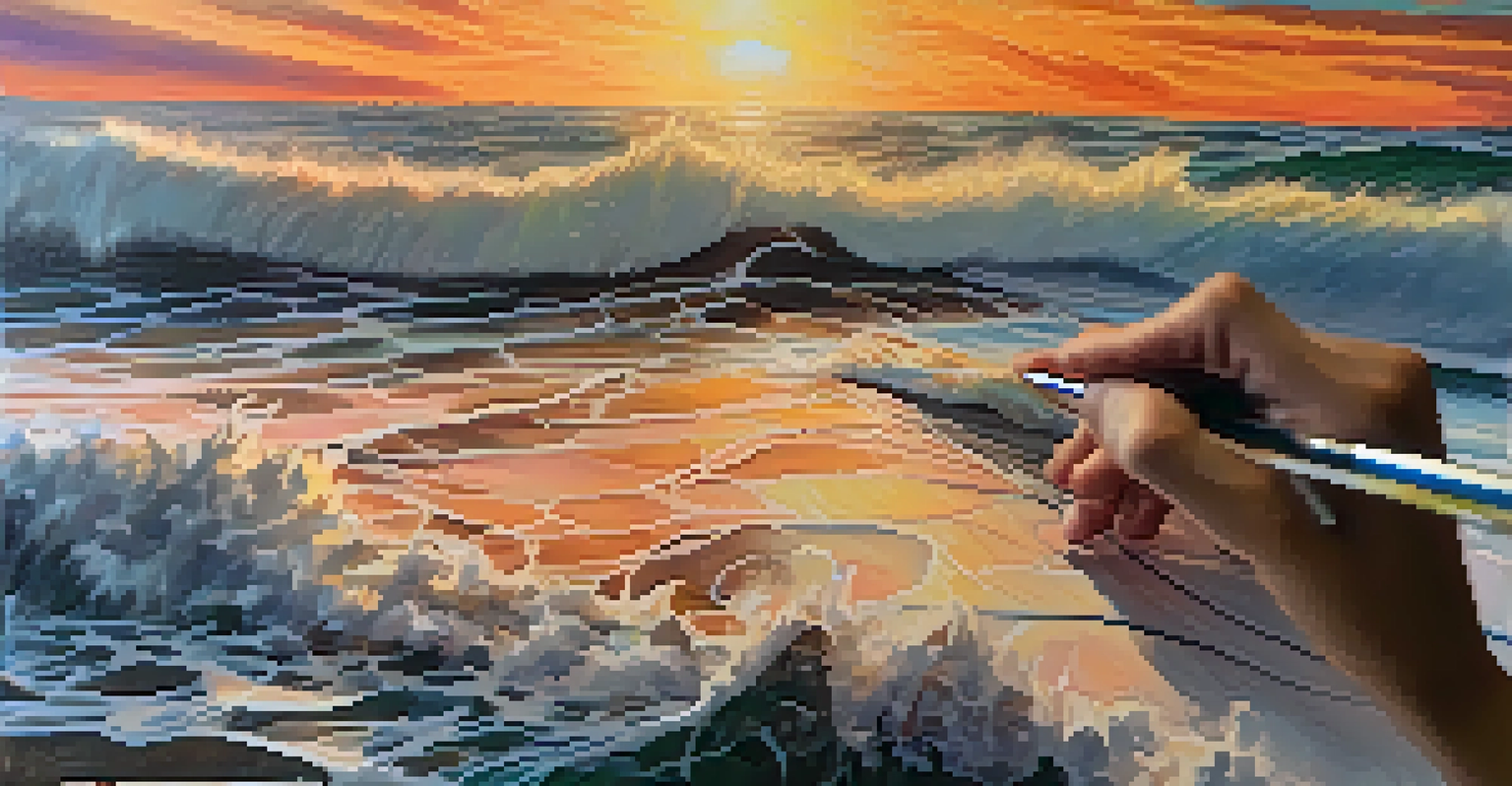The Intersection of Art and Philosophy: A Theoretical Guide

Understanding the Foundation of Art and Philosophy
Art and philosophy are two realms that, at first glance, may seem distinct. However, both fields explore fundamental questions about existence, beauty, and meaning. Philosophy provides the framework for understanding concepts that art seeks to express, making their relationship rich and complex.
Art enables us to find ourselves and lose ourselves at the same time.
For instance, consider how a painting can evoke emotions or provoke thought; this is where philosophical inquiry comes in. What does it mean for something to be beautiful? How do we derive meaning from a piece of art? These are questions philosophers have pondered for centuries, and they serve as a foundation for appreciating art more deeply.
Related Resource
Ultimately, by understanding the philosophical underpinnings of art, we can appreciate not only the techniques and aesthetics involved but also the ideas and emotions that the artist aims to convey.
The Role of Aesthetics in Art and Philosophy
Aesthetics, a branch of philosophy, delves into the nature of beauty and artistic taste. It asks critical questions about what we consider beautiful and why those standards exist. This exploration is essential for artists and art lovers alike, as it provides a framework for evaluating art beyond mere personal preference.

For example, the works of Vincent van Gogh challenge traditional notions of beauty with their bold colors and emotional intensity. Philosophers might argue that such art invites viewers to reconsider their standards of beauty, pushing the boundaries of what can be appreciated in the artistic space.
Art and Philosophy Intertwined
Art and philosophy work together to explore fundamental questions of existence, beauty, and meaning.
By engaging with aesthetics, we not only enhance our understanding of art but also cultivate a deeper appreciation for the diverse forms of expression that exist in the world around us.
Art as a Philosophical Inquiry
Art often serves as a medium for philosophical inquiry, allowing artists to explore profound questions through their work. Many artists use their creations to comment on societal issues, human nature, and existential dilemmas. This intersection prompts viewers to reflect on their beliefs and the world around them.
Philosophy is a battle against the bewitchment of our intelligence by means of language.
Take, for instance, the thought-provoking installations of contemporary artists like Ai Weiwei, who uses art to challenge political and social norms. His work invites audiences to grapple with the implications of freedom and human rights, seamlessly blending art with philosophical discourse.
Related Resource
In this way, art becomes a vehicle for philosophical exploration, urging us to confront and question our understanding of the human experience.
Philosophy's Influence on Artistic Movements
Throughout history, various philosophical movements have significantly influenced artistic trends. The Enlightenment, for instance, championed reason and individualism, leading to the rise of Romanticism, which emphasized emotion and nature as sources of inspiration. This interplay demonstrates how philosophical ideas can shape the trajectory of art.
Consider how existentialist thought, with its focus on individual freedom and the absurdity of life, has inspired artists like Edward Munch and his iconic work 'The Scream.' Such pieces reflect the philosophical struggle and resonate with audiences seeking to understand their own existence.
Aesthetics Shape Artistic Taste
Aesthetics, a branch of philosophy, influences how we evaluate and appreciate beauty in art.
This symbiotic relationship between philosophy and art continues to evolve, illustrating the dynamic nature of both fields as they respond to and influence one another.
The Impact of Cultural Context on Art and Philosophy
Cultural context plays a critical role in shaping both art and philosophical thought. Different societies have unique values and beliefs that influence their artistic expressions and philosophical inquiries. By examining the cultural backdrop, we can gain insight into how art reflects and critiques societal norms.
For example, African art often integrates spiritual beliefs and communal values, showcasing how culture shapes artistic representation. Philosophical reflections on community and identity are often embedded in these works, creating a rich dialogue between the two realms.
Related Resource
Understanding this cultural interplay enhances our appreciation of art and philosophy, allowing us to see how they respond to and shape the human experience in different contexts.
The Emotional Connection Between Art and Philosophy
Art has a unique ability to evoke emotions, and philosophy seeks to understand the nature of those feelings. This emotional connection is a vital part of why art resonates with us on a personal level. Philosophers argue that art can encapsulate complex emotional experiences, making them accessible to viewers.
Take the haunting melodies of a classical symphony, for instance; these compositions can stir profound feelings of joy, sadness, or nostalgia. In this sense, art serves as a bridge to philosophical exploration, prompting us to reflect on our emotions and their significance in our lives.
Cultural Context Influences Art
Cultural context is crucial in shaping both artistic expression and philosophical inquiry, reflecting societal values.
By recognizing the emotional depth of art, we engage in a richer dialogue with philosophical concepts, enhancing our understanding of both the art itself and our emotional responses.
Future Directions: Art and Philosophy in Contemporary Society
As we look toward the future, the intersection of art and philosophy remains ever-relevant, especially in our increasingly complex world. Contemporary artists continue to tackle pressing issues such as climate change, identity politics, and technology's impact on society. These themes invite philosophical reflection and challenge us to consider our role in shaping the future.
For example, digital art and virtual reality are pushing the boundaries of traditional art forms, prompting philosophical questions about authenticity, reality, and experience. As we navigate these evolving landscapes, the dialogue between art and philosophy will only deepen.

In a world grappling with change, embracing this intersection can inspire us to think critically and creatively about the challenges we face, reminding us of art's power to provoke thought and spur action.